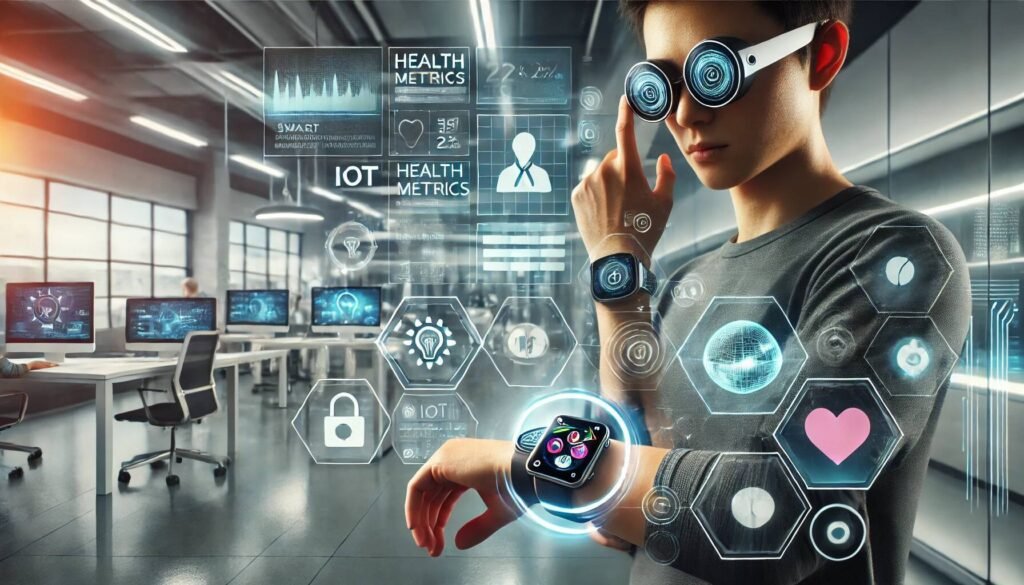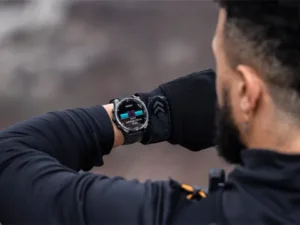Wearable technology is evolving rapidly in 2025, with exciting innovations for fitness, health, and even augmented reality (AR). In this wearable tech update, we look at the latest smartwatches, fitness trackers, health wearables, and AR glasses – focusing on the Nigerian market (where availability and cost are key concerns) while drawing on global trends (especially from the US).
We’ll cover new devices launched in 2024–2025, emerging features (AI assistants, real-time biometrics, longer battery, etc.), and what’s on the horizon. Wherever possible we cite official sources or news to keep you up-to-date. By the end, you’ll know which devices suit professionals, athletes, health-focused users, or tech enthusiasts, and how Nigerians can access them affordably despite limited local availability.
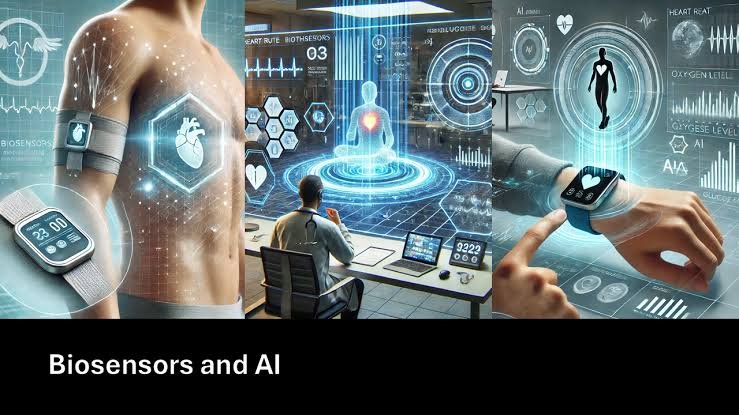
Smartwatches
The smartwatch industry continues to be a field of big brands with high-end functions. In late 2024, Apple introduced Apple Watch Ultra 2 and Series 9 (49mm titanium case) – the device is aimed at extreme sports and has a long battery life. Apple claims that Ultra 2 contains the most accurate GPS in a sports watch and up to 36 hours of regular usage.
These are able to capture more advanced exercise data (such as running form, heart rate zones, track detection) and even dive up to 100m. The Galaxy Watch8 is one of the best Samsung options: It and the newer Galaxy Watch Ultra have ECG and even blood-pressure monitoring. As an example, the Galaxy Watch8 has advanced health sensing and the biggest battery in a smartwatch made by Samsung. Also in 2025 we saw the Google Pixel Watch 3 and Google has announced the Pixel Watch 4 which has a larger brighter 3000-nit display and new features.
The Pixel Watch 4 has an emergency calling feature called Satellite SOS, a side-charging connector, and a health coach with AI-assisted Google Gemini. Even OnePlus participated: the OnePlus Watch 3 (2025) has an impressive 120-hour battery life and fresh health sensors, so it is an excellent budget option for Android users.
In Nigeria, Apple Watches are expensive imports (no official Apple Store), so alternatives from Chinese brands fill the gap. For instance, itel’s Apex N10 (₦57,100 in Nigeria) is a new budget smartwatch with a 1.43″ AMOLED screen, GPS, 5ATM waterproof, and BT calling. The Apex N10 offers 100+ sports modes and notifications – ideal for casual fitness and busy professionals on a budget. Similarly, brands like Oraimo and Amazfit sell affordable smartwatches locally. These often lack the advanced health sensors of Apple/Samsung, but they address price and availability pain points in Nigeria.
Key trends: New smartwatches in 2025 pay more attention to AI and biometrics integration. Voice assistants and on-device AI (e.g. Meta Hey Meta on Ray-Ban glasses) point towards a more intelligent future, in watches too.
Look for more multi-band GPS watches, persistently on-track heart-rate/ECG monitoring, and longer battery. Sport lovers will enjoy the extra-robust models (such as the Ultra 2) with accurate route detailing whereas the professional will enjoy the ease of phone connectivity (call/text), as well as health tracking to counteract desk jobs.
- For professionals: Smart notifications, safety (fall detection), and health alerts (ECG, blood pressure) provide the ability to monitor well-being.
- Athletes/fitness: The importance of such features as GPS, swim tracking, VO 2 max, and recovery data cannot be overstated.
- To those interested in health: ECG, SpO 2, and constant heart rate monitoring are essential; Apple Watch and Samsung have it.
- To tech enthusiasts: top-of-the-line devices (e.g. Ultra 2, Pixel Watch 4) offer bleeding-edge performance and new sensors (e.g. skin temperature).
Availability: Apple, Samsung and Pixel (the global flagship smartwatches) are not officially sold in Nigeria, they are however often available through online importers (e.g. u-buy, Jumia) or resellers. OnePlus and Amazfit are cheaper to find online. Looking at a cheaper alternative, go with local or Chinese brands (Itel, Oraimo) focused on the basics of fitness tracking and fashion over high-end features
Fitness Trackers & Bands
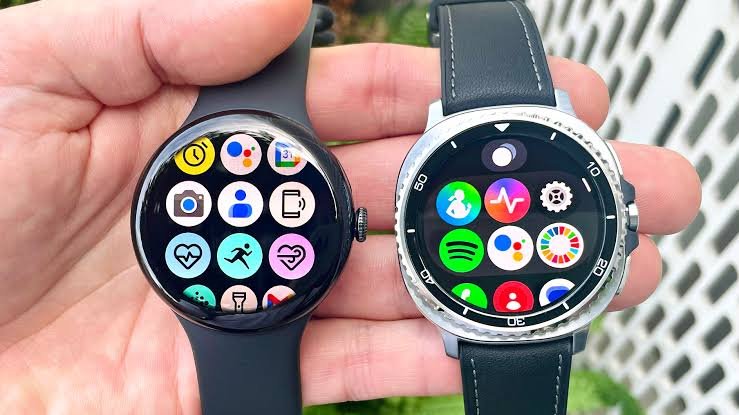
Beyond full-featured smartwatches, simple fitness trackers (bands and ring devices) continue to improve. The Xiaomi Smart Band 8 (Global Version) is a prime example: it launched with a 1.62″ AMOLED screen (60Hz refresh) and a 16-day typical battery life. It tracks 150+ sports modes, all-day heart rate, SpO₂, sleep, stress and women’s health – essentially acting as a “health consultant” on your wrist. The Band 8 has fast charging (1 hour full), 60Hz smooth display, and even a 6-day always-on mode.
Similarly, Wearable Tech Update like Fitbit’s trackers (like the Inspire series) and Huawei/Xiaomi’s bands emphasize long battery and core health metrics. In 2024–2025, we’ve also seen “smart rings” gaining attention: Oura’s new Ring 4 and Samsung’s Galaxy Ring rival devices are releasing, and Ultrahuman unveiled luxury versions plated in gold at CES 2025. These rings discreetly track sleep and vital signs (heart rate, temperature, etc.), appealing to wellness enthusiasts.
Trends in fitness trackers are the miniaturization and comfort (e.g., under-10mm smart rings) and extended health sensing. The brands such as Garmin and Amazfit are still improving their trackers.
As an example, Garmin new Vivosmart or Fitbit Inspire 3 have more advanced heart-rate sensors and phone connection. In early 2025, CES demonstrated blood-pressure monitoring devices (see next section) that can be integrated with wrist bands in the near future. The training insights generated by AI (so-called smart coach apps) are also taking off.
In Nigeria, the Mi Band 8 Global is imported (roughly 130k on Ubuy). More typical are the cheaper bands used by Nigerians: Oraimo, Tecno and Huawei bands can be found in online stores and cost less than 20,000 naira. These are not necessarily AMOLED-screened, or with advanced metrics, but do well with the basics (steps, heart rate).
Regarding feature awareness, budget bands usually have sleep and heart-monitoring features, the user only needs to activate them via the companion app.
Primary user groups
- Casual fitness enthusiasts: Will appreciate bands ease of use and longevity of battery life to monitor steps, activities and sleep.
- Weight-loss or wellness users: Take advantage of the constant heart-rate and SpO 2 monitoring to measure stress and recovery.
- Tech enthusiasts: There is something new about smart rings (Oura, Ultrahuman) and their constant monitoring without a screen in sight
Solutions to the pain points: With regard to price, secondhand older models or off-brand trackers can be purchased. To connect, your smart phone must be Bluetooth LE compatible. And to add as much value as possible, plunge into free companion apps (Huawei Health, MiFit, Fitbit) to derive insight out of the information captured by your tracker.
Health Tech Devices
These gadgets enable health-aware consumers (particularly diabetics) to track glucose all the time – a huge improvement to the ancient blood-glucose meters. Alas, CGMs are not cheap and easy to find in the Nigerian healthcare system; some Nigerians buy them abroad through specialty pharmacies or online vendors (e.g. mediglow.ng lists Dexcom G7).
Smartwatches already provide heart rate, SpO2 and sleep data, in general health. There is an increase of medical-grade measurements in 2025.
As an illustration, the new BPM Pro 2 by Withings (a CES2025 Innovation Honoree) is a home blood pressure device that also performs an on-demand ECG. It is cell phone-connected such that readings are sent directly to physicians. This is an indication that wearables at home that allow remote monitoring of patients are on the rise.
The device by Withings is capable of monitoring blood pressure and an ECG and basically substitutes a clinic visit by basic checkups. FDA-cleared ECG (e.g. future watches by Apple/Samsung) and pulse-oximetry will remain on the wrist.
Key trends: Continuous biometrics and AI diagnostics. Health trends (e.g. warning about irregular heartbeats based on ECG data) will be analyzed on a device and provide actionable advice. On-device AI guidance is one example of the Pixel Watch 4, which has an AI health coach.
Wearable medical technology is heading in the direction of optional notifications: alerting the physician or family when something is wrong. To illustrate, the Dexcom app can transmit the reading to the caregivers and BPM Pro 2 is capable of sending the message through the device to the care team.
User relevance:
Conscious people and patients: CGMs and ECG wearables allow people to stay informed and even avoid an emergency. E.g. an Apple Watch ECG or Withings BP monitor will aid in early detection of conditions.
- Athletes/fitness: CGMs are used to best-fit diet and training. In addition, the training load is directed by high-tech metrics (such as Garmin VO 2 max and recovery analysis).
- Professionals under stress: Continuous stress monitoring (HRV, cortisol via skin) may become more common in trackers, helping manage work-life balance.
Availability: In Nigeria, advanced medical wearables are scarce. Local clinics may not prescribe Dexcom or Fitbit ECG. However, Nigerian online markets do sell imported Apple Watches, Galaxy Watches, and sometimes Unbranded ECG monitors.
Solutions include telemedicine partnerships (e.g., remote monitoring) or waiting for local distributors. Prices remain high: a Dexcom sensor costs hundreds of dollars. On the bright side, the proliferation of smartphone health apps (even without hardware) raises awareness of these features among Nigerians.
AR and Smart Glasses
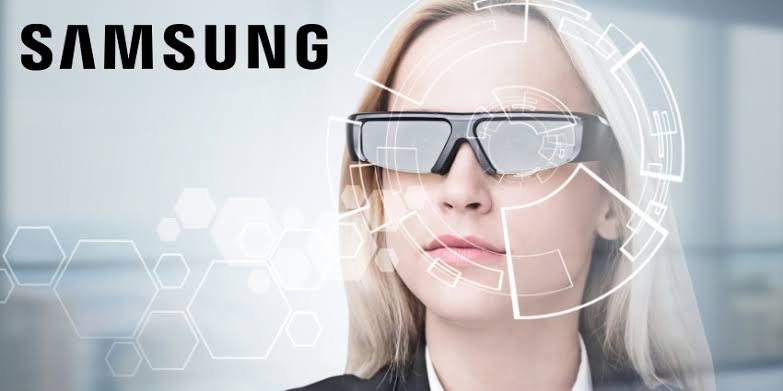
The latest type of accessories combining wearables and technology eyewear is augmented reality (AR) glasses. In 2024 Facebook produced a new AI-capable Meta-Ray-Ban smart glasses. These novel pairs of Ray-Ban AI glasses (priced starting at $299) are a wide-angle 12 MP camera, AI voice control named Hey Meta, and powerful Snapdragon AR1 Gen1 chips on-board to process the information. Meta had gone to the point of including livestreaming to social feeds right off your glasses.
Meta focuses on comfort and style – adding to the glasses features such as becoming slimmer and lighter and resistant to water, as suggested by users. In June 2025, Snap Inc. announced it will launch its first consumer AR glasses, dubbed, Specs, in 2026. Such will be genuinely augmented-reality wearables (not camera-only Spectacles like the Snapchat), indicating that major players are placing bets on daily-use AR. There is some rumour concerning AR glasses by 2026 as well.
AR glasses to people in Nigeria are a curiosity of the future. The Snap Specs and Ray-Ban AI glasses of Meta are mostly sold in Europe and the US. But these trends are followed by tech enthusiasts in Nigeria. In the long run, AR might be useful to professionals (e.g. superimposing data on architects), gamers/entertainers (mixed reality experience), or users with visual impairments (audio description) – but these are infancy years.
Trends: Consumer AR is drawing near. The number of AI implementations (e.g., language translators, image search) will be expected to increase as on Ray-Ban Meta. Glasses will become light and cheaper in the long run. In case Specs created by Snap reach the market in 2026, it will spark competition.
In the meantime, the most readily available wearables of AR-type are smart sunglasses, which have a camera (Ray-Ban Stories, Spectacles by Snap). High-end AR gadgets of this kind can be imported to Nigeria or found in technological centers, however, the general population will probably not use them in the nearest future.
Looking Ahead
In this wearable tech update, we have already witnessed that 2025 will see not only minor upgrades but also radical devices. Among the categories, the most popular are AI-powered insights (voice assistants, AI coaches), real-time health tracking (ECG, glucose, stress), and increased battery life (some trackers now up to 100 hours).
To overcome the barriers, the primary solutions applicable to the Nigerian consumers are either to settle on low priced brands or to wait until the local pricing changes, or to make sure to utilize the inbuilt functionality (such as mobile health apps) in order to receive the best value. With features trickled down, even entry-level wearables now have the ability to be taken seriously, allowing more people to remain fit and healthy.
You can be a professional who wants a reliable health monitor, an athlete who wants to break his own records, or a technological enthusiast, who wants to experience AR glasses; there is a wearable update for you.
Watch future announcements (Apple, Samsung, and Google events in late 2025) and CES 2026 previews, which will prefigure the next-year gadgets. By being educated—by keeping up on the latest information, such as official sites, product news and technological news—you will have no problems locating a wearable that fits your lifestyle and budget.

